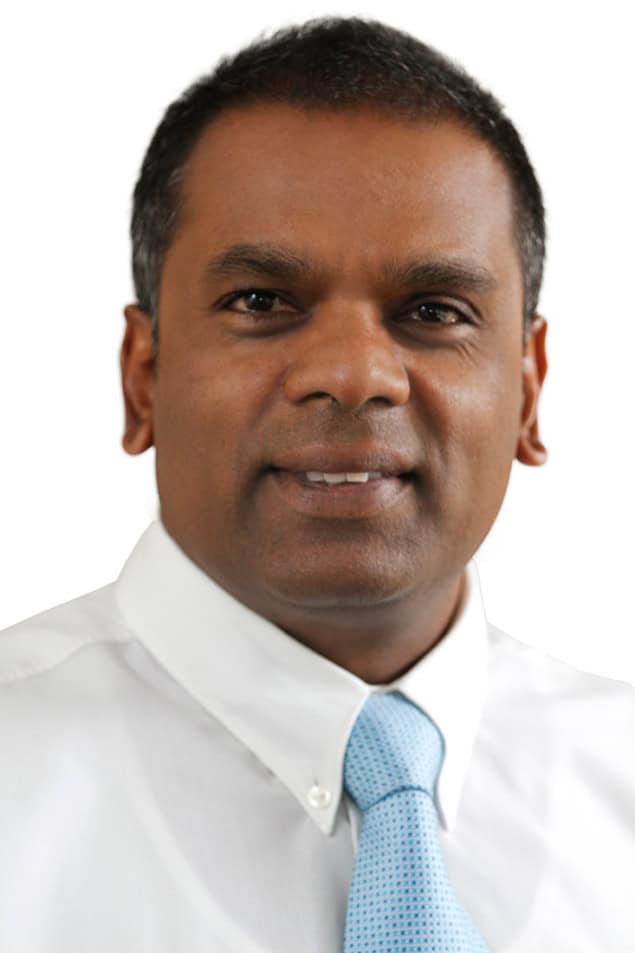As South Africa’s MeerKAT radio telescope begins producing its first results, Manisha Lalloo meets physicist Nithaya Chetty, deputy chief executive officer of astronomy for the country’s National Research Foundation, about how it can boost research in the region

What is the Square Kilometre Array (SKA)?
The SKA will be the world’s largest radio telescope when it comes online in the coming decade. It will consist of thousands of dishes and antennas spread out across Africa and Australasia. The first phase of the SKA, which will be complete around 2023, will see an array of almost 200 dishes built in South Africa covering the bulk of the high- and mid-frequencies of the radio spectrum, while Australia will host over 100,000 low-frequency dipole antennas. The second phase will complete the arrays at both sites and when finished by 2030 the SKA will consist of several thousand high-frequency and mid-frequency telescopes and aperture arrays, along with several million low-frequency antennas.
What is South Africa’s contribution?
South Africa is currently building MeerKAT – a 64-dish mid-frequency array that is located in the Karoo semi-desert region more than 500 km north-east of Cape Town. It is managed by the National Research Foundation (NRF) and when fully operational by the end of 2017 it will be the most sensitive radio telescope of its kind in the world. An additional 133 dishes will be built by the international SKA consortium in South Africa and we will integrate our 64 dishes into the broader array in 2023.
Who is paying for MeerKAT?
MeerKAT is being funded by the South African Department of Science and Technology. South African science minister Naledi Pandor has been instrumental in getting the project off the ground.
What is its current status?
We now have more than 25 dishes bedded down and are beginning to produce scientific results.
We will be discovering objects and studying scientific, astronomical phenomena that we might not have predicted and could not have imagined
Has the telescope made any scientific discoveries yet?
Using just 16 dishes, in June we discovered several hundred new galaxies. So by the time we get to the fully fledged SKA we will be discovering objects and studying scientific, astronomical phenomena that we might not have predicted and could not have imagined. It will be transformational science because the instrument will be so much bigger and more powerful that anything we currently have.
What is the timeline for the rest of the SKA construction?
The various partner governments are still in the process of securing the treaty organization, hosting agreement, funding, procurement and so on. It is still a work in progress and until we have all the partners fully on board I cannot say for sure when the first phase of the SKA will roll out and be fully functional, but this is planned for around 2023. If there is a delay, the NRF will continue to operate MeerKAT as a South African telescope.
How much of South Africa’s science funding is being spent on the SKA?
Funding for science and research infrastructure in South Africa comes primarily from the NRF with an annual budget of ZAR 4bn ($300m). Cash for astronomy, not including the SKA, is about 4.5% of this amount. With money for the SKA included, it is around 27%, with funding being a special allocation from the National Treasury. Once we have finished construction of MeerKAT the operational budget will be around 8% per year of the total capital expenditure.
How are you engaging other African countries?
When we led the site-host bid we involved eight other African partner countries: Botswana, Ghana, Kenya, Madagascar, Mauritius, Mozambique, Namibia and Zambia. SKA instruments will only be built in these countries in the second phase of the SKA, which will begin in 2023. We have begun development in our African partner countries by refurbishing unused telecommunications dishes for single-dish radio astronomy and to start work on an African very-long-baseline interferometry network.
How are you training people for the SKA?
We are very keen to develop our own home-grown talent, and we have put in a huge effort to achieve that for more than a decade now. The annual ZAR 50m SKA human capacity development programme has issued more than 800 grants in the last decade, including for degree-level students and research chairs for established individuals. We have managed to recruit high-profile scientists from around the world to increase our research student supervisory capacity.
How will you define success for the SKA project?
From a South African perspective, it would have to be leading transformational science using the SKA. But of course it goes beyond doing science. I would like to see the SKA project attracting a new generation of children to science, and also stimulating innovation and supporting industry. For a project on this scale you can imagine that the technical innovations – for example in “big data” – are at the cutting edge. We would like those innovations to be done by South African industries so there is potential for commercialization of those technologies.



